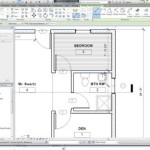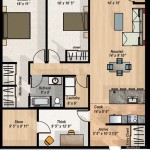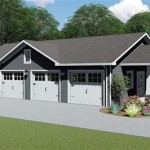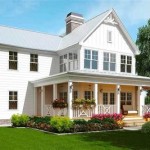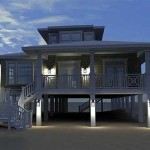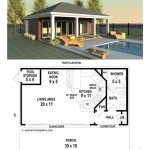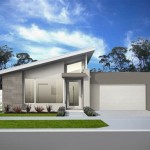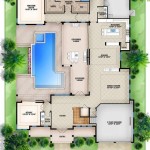Small 2 Bedroom House Plans And Designs In Kenya
The demand for small, affordable, and functional housing solutions is rapidly increasing in Kenya. This trend is driven by factors such as rising urbanization, a growing young population, and the desire for homeownership, particularly among first-time buyers. Two-bedroom house plans and designs have emerged as a popular choice, offering a balance between affordability, space utilization, and comfort. These designs cater to small families, young professionals, and retirees looking for manageable living spaces.
The construction industry in Kenya has responded by providing diverse two-bedroom house plans and designs. These designs incorporate contemporary architectural styles, sustainable building materials, and innovative space-saving techniques. Understanding the nuances of these plans and designs is crucial for prospective homeowners to make informed decisions aligning with their budget, lifestyle, and future needs.
This article will explore the various aspects of small two-bedroom house plans and designs in Kenya, covering key considerations such as design styles, material choices, cost factors, and regulatory requirements. The aim is to provide a comprehensive overview that can assist individuals in navigating the process of planning and building their ideal two-bedroom home.
Effective space utilization is paramount in small two-bedroom house designs. Architects and designers employ various strategies to maximize living areas without compromising functionality. Open-plan living, dining, and kitchen areas are common features, creating a sense of spaciousness and facilitating social interaction. Strategic placement of windows and doors enhances natural light and ventilation, further contributing to a comfortable living environment.
Storage solutions are also carefully considered. Built-in wardrobes, under-stair storage, and multi-functional furniture are integrated to minimize clutter and optimize space. The layout of the bedrooms is designed to ensure privacy and comfort, often incorporating ensuite bathrooms or shared bathrooms accessible from both bedrooms and the living area.
Key Considerations When Choosing a Two-Bedroom House Plan
Several factors influence the selection of an appropriate two-bedroom house plan. These encompass budget constraints, site conditions, lifestyle requirements, and long-term investment goals. A thorough assessment of these factors is essential before committing to a specific design.
Budget: The budget allocates the financial resources available for the entire construction project. It encompasses land purchase (if applicable), architectural design fees, construction materials, labor costs, permits, and interior finishing. A realistic budget should be established early in the planning process to guide the design choices and prevent financial overruns. Value engineering, which involves identifying cost-effective alternatives without sacrificing quality or functionality, is crucial in managing the budget effectively.
Site Conditions: The physical characteristics of the building site significantly impact the design and construction process. Soil type, topography, drainage patterns, and orientation influence the foundation design, structural integrity, and overall layout of the house. Geotechnical investigations and site surveys are conducted to assess these factors and inform the design accordingly. For instance, a sloping site may require a split-level design or retaining walls, while a site with poor drainage may necessitate additional drainage systems.
Lifestyle Requirements: The lifestyle of the occupants dictates the functional requirements and spatial needs of the house. Consider factors such as the number of occupants, work-from-home arrangements, entertainment preferences, and hobbies. A family with young children may require a larger living area and a secure outdoor play space, while a couple working from home may need dedicated office space. The design should accommodate these specific needs and create a comfortable and functional living environment.
Long-Term Investment Goals: Homeownership is often viewed as a long-term investment. The design and construction quality of the house influence its future resale value and potential rental income. Choose durable building materials, energy-efficient features, and a design that appeals to a wide range of potential buyers. Consider future expansion possibilities, such as adding an extra room or converting an attic space, to enhance the long-term value of the property.
Popular Design Styles for Two-Bedroom Houses in Kenya
Kenyan homeowners have a diverse range of design styles to choose from, each with its unique aesthetic appeal and functional characteristics. These styles often blend traditional Kenyan architectural elements with modern design principles.
Modern/Contemporary: Modern and contemporary designs emphasize clean lines, open spaces, and minimalist aesthetics. Large windows, flat roofs, and geometric shapes are common features. These designs often incorporate sustainable building materials and energy-efficient technologies. The emphasis is on creating a bright, airy, and functional living environment. Interior spaces are typically uncluttered, with neutral color palettes and minimal ornamentation.
Traditional Kenyan: Traditional Kenyan architecture varies depending on the region and ethnic group, but some common elements include pitched roofs, earth-based construction materials, and enclosed courtyards. These designs often incorporate locally sourced materials and traditional building techniques. While traditional designs may not always be practical for urban settings, elements such as natural ventilation, shaded verandas, and locally inspired decorative details can be incorporated into modern designs to create a sense of cultural identity.
Bungalow: Bungalows are single-story houses characterized by their low-pitched roofs, wide eaves, and prominent front porches. They are often built with natural materials such as wood and stone, creating a cozy and inviting atmosphere. Bungalows are well-suited for smaller plots of land and are popular among retirees and families with young children. The single-story layout offers ease of access and eliminates the need for stairs.
Maisonette: A maisonette is a two-story house that often incorporates a compact footprint. Living areas are typically located on the ground floor, while bedrooms are situated on the upper floor, providing privacy and separation between living and sleeping spaces. Maisonettes are well-suited for urban areas with limited land availability. The vertical design allows for efficient use of space while maintaining a comfortable living environment.
Cost Considerations for Building a Two-Bedroom House
The cost of building a two-bedroom house in Kenya varies depending on several factors, including the size of the house, the quality of materials used, the location of the site, and the complexity of the design. A detailed cost breakdown is essential for effective budgeting and financial planning.
Materials: Construction materials account for a significant portion of the overall cost. The choice of materials influences both the aesthetic appeal and the structural integrity of the house. Common building materials in Kenya include concrete blocks, bricks, timber, steel, and roofing tiles. The cost of these materials fluctuates depending on market conditions and availability. Sourcing materials locally can often reduce transportation costs and support local businesses.
Labor: Labor costs encompass the wages paid to construction workers, including masons, carpenters, plumbers, electricians, and painters. Labor rates vary depending on the level of skill and experience required. Engaging qualified and experienced contractors is crucial to ensure quality workmanship and adherence to building codes. It is advisable to obtain multiple quotes from different contractors and carefully review their credentials and references.
Permits and Approvals: Building permits are required from local authorities before commencing construction. These permits ensure that the project complies with building codes and regulations. The cost of permits varies depending on the municipality and the size of the project. Obtaining the necessary permits is essential to avoid legal complications and potential fines.
Finishing and Fixtures: Finishing and fixtures include items such as flooring, painting, plumbing fixtures, electrical fixtures, kitchen cabinets, and bathroom fittings. The cost of these items varies depending on the quality and style chosen. Opting for cost-effective yet durable materials can help to reduce overall costs without compromising functionality. Phased installation of finishes can also help manage the budget effectively.
Land Costs: Where applicable the cost of acquiring land can be a significant factor, particularly in urban areas. Land prices vary depending on the location, size, and zoning regulations. Conducting thorough due diligence before purchasing land is essential to ensure that it is suitable for the intended purpose and free from any encumbrances.
By carefully considering these cost factors and implementing effective cost-saving strategies, it is possible to build a comfortable and affordable two-bedroom house in Kenya. Value engineering, careful budgeting, and sourcing materials locally can all contribute to reducing overall costs without compromising quality.

2 Bedroom House Plan In Kenya With Floor Plans Amazing Design Muthurwa Com

Two Bedroom House Design Muthurwa Com One Y

Affordable Two Bedroom House Plans In Kenya

Simple Two Bedroom House Plans In Kenya To Co Ke

2 Bedroom House Plans In Kenya And

2 Bedroom House Plans For Stylish Homes Ck

House Plans 2 Bedroom In Kenya West Real Estate

2 Bedroom House Plans For Stylish Homes Ck

Simple Two Bedroom House Plans In Kenya To Co Ke

Want To Build A Simple And Beautiful Home See These Two Bedroom House Plans
Related Posts

